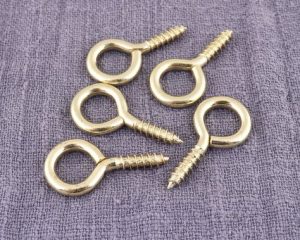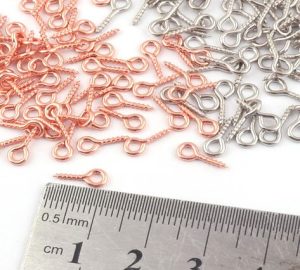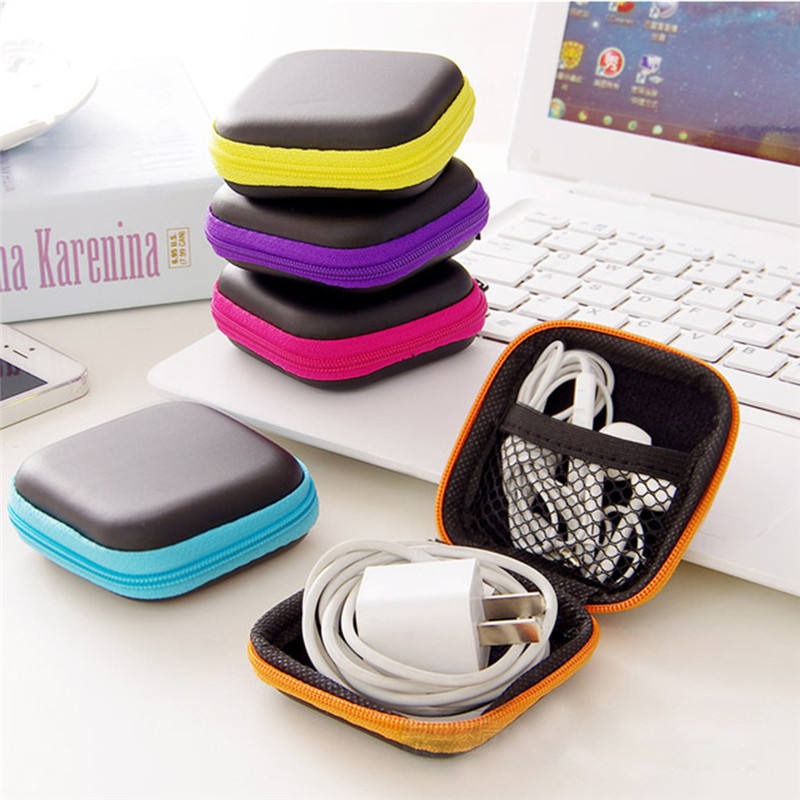Small screws, often overshadowed by their larger counterparts, play an essential role in our everyday lives. From keeping your glasses on your face to securing the delicate components inside your electronics, small screws hold the world together, one tiny turn at a time. This article will explore the fascinating world of small screws, their applications, and how to choose the right screw for the job.
The Mighty Mini: Types of Small Screws
They come in a diverse range of shapes, sizes, and materials. Here’s a closer look at some common types of small screws:
Phillips head: This is a popular type of screw with a cross-shaped indentation in the head. A Phillips screwdriver fits this indentation for easy turning.
Flat head:
Flat head screws have a flat top surface. A slotted screwdriver is used to turn these screws.
Socket head:
These screws have a hexagonal-shaped indentation in the head. A socket wrench fits this indentation for tightening.
Torx:
Torx screws have a star-shaped indentation in the head. A Torx screwdriver is required to turn these screws.
Machine screws:
These are cylindrical screws with threads along their entire length. They are typically used with nuts and washers.
Wood screws:
These screws have threads designed to bite into wood for a strong hold.
Choosing the Right Screw Size
Small screws come in a vast array of sizes. When choosing a screw, it’s important to consider the thickness of the materials you are joining and the amount of strength needed. Using a screw that is too small may not provide enough holding power.
However, a screw that is too large could damage the materials.
Here are some additional factors to consider :
Length:
The length of the screw should be slightly longer than the combined thickness of the materials you are joining.
Thread diameter:
The thickness of the screw shaft, or thread diameter, should be appropriate for the size and weight of the materials.
Big Jobs for Small Screws: Applications
Small screws have a seemingly endless number of applications across various industries. Here are just a few examples:
Electronics:
Tiny screws hold together the complex circuitry inside our computers, phones, and other electronic devices.
Eyewear:
Small screws secure the frames of eyeglasses and sunglasses.
Furniture:
Screws of various sizes are used to assemble furniture, from chairs and tables to cabinets and bookshelves.
Appliances:
Small screws play a vital role in keeping the internal components of appliances securely fastened.
Toys:
Many toys rely on small screws to secure different parts and ensure safe play.

Using Small Screws Safely
While small screws are generally safe to use, it’s important to handle them with care to avoid injury. Here are some safety tips:
Use the right screwdriver:
Using the wrong screwdriver can damage the screw head and make it difficult to turn.
Eye protection:
Wear safety glasses when working with small screws to protect your eyes from flying debris.
Sort and store carefully:
Keep screws organized by type and size in a compartmentalized box to prevent them from getting lost.
Disposal:
Dispose of unwanted screws responsibly. Metal screws can be recycled in most communities.
Small screws may be small, but their impact is undeniable. From the intricate workings of electronics to the furniture in our homes, small screws play a vital role in our everyday lives. By understanding the different types of small screws, choosing the right size for the job, and using them safely, you can ensure these tiny fasteners continue to hold the world together.
The Fascinating World of Miniaturization
Small screws are a testament to the wonders of miniaturization. Engineers have developed incredible technologies that allow them to create these tiny fasteners with remarkable precision. Here are some interesting facts about the miniaturization of screws:
-
Micromanufacturing: Small screws are often produced using micromanufacturing techniques, which involve incredibly small tools and precise control.
-
Material science: The materials used in small screws are specially chosen for their strength and durability at a miniature scale.
-
Quality control: Strict quality control measures ensure that small screws meet exact specifications for size, shape, and thread integrity.
The Future of Small Screws
As technology continues to advance, we can expect to see even smaller and more sophisticated screws being developed. Here are some potential future applications:
Medical devices:
Miniaturized screws could be used in delicate medical devices for minimally invasive surgery.
Microbots:
You can use tiny screws to assemble and repair microbots.
Aerospace engineering:
Small, lightweight screws could be essential for building and maintaining spacecraft.
Small screws may be small, but they play a big role in the world around us. From the devices we use every day to the future of miniaturized technology, small screws are a vital part of our world. By understanding their importance and the fascinating world of miniaturization, we can appreciate the small things that make a big difference.
The Screwdriver’s Perfect Partner: The Art of Tiny Drilling
While small screws are the stars of the show, drilling tiny holes is equally important for successfully using them. Here are some tips for drilling precise holes for small screws:
Pilot holes:
Always drill a pilot hole before inserting a screw. This helps prevent the material from splitting or cracking, especially when working with wood.
The right drill bit:
This ensures the screw will create its own threads for a secure fit.
Drill speed:
Start with a slow drilling speed and gradually increase it as needed. Drilling too fast can damage the material or break the drill bit.
Steady hand:
When drilling tiny holes, it’s crucial to have a steady hand. Use a clamp to secure your workpiece if necessary.
The Future of DIY with Small Screws
Small screws open up a world of possibilities for DIY projects. You can start with these inspiring ideas :
Jewelry making:
You can use tiny screws to create unique and delicate pieces of jewelry.
Custom phone cases:
Personalize your phone case by adding small screws to attach decorative elements.
Miniature furniture:
Build miniature furniture for dollhouses or other craft projects using small screws for assembly.
Repairing small electronics:
If you’re comfortable tinkering, small screws can be helpful for fixing minor issues in electronics. Remember, consult a professional for repairs beyond your skill level.
Conclusion
Small screws are a versatile and essential tool for countless applications. By understanding the different types, sizes, and uses of small screws, you can tackle various DIY projects and appreciate the precision engineering that goes into these tiny marvels. So, the next time you encounter a small screw, take a moment to recognize its role in the world around you.











